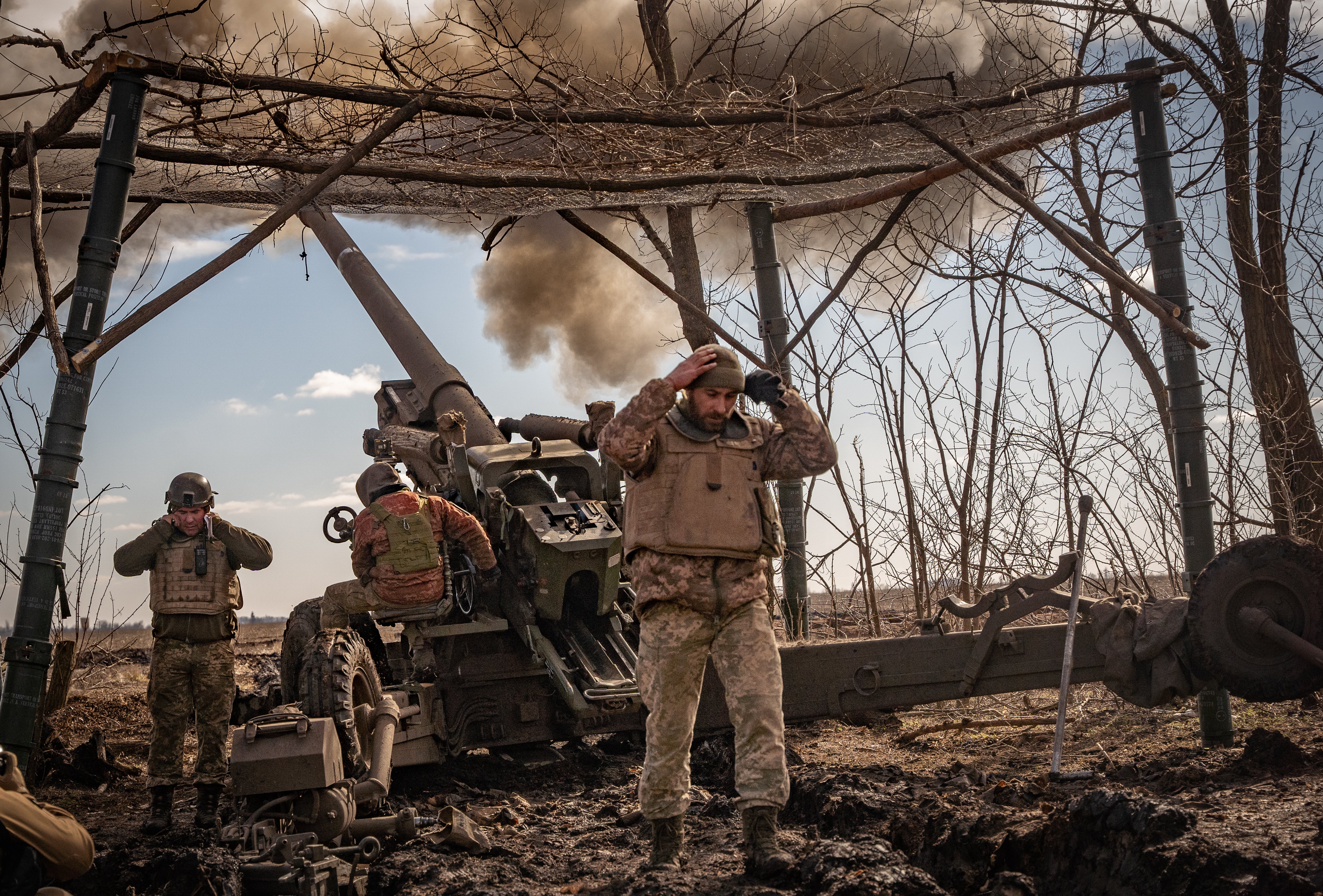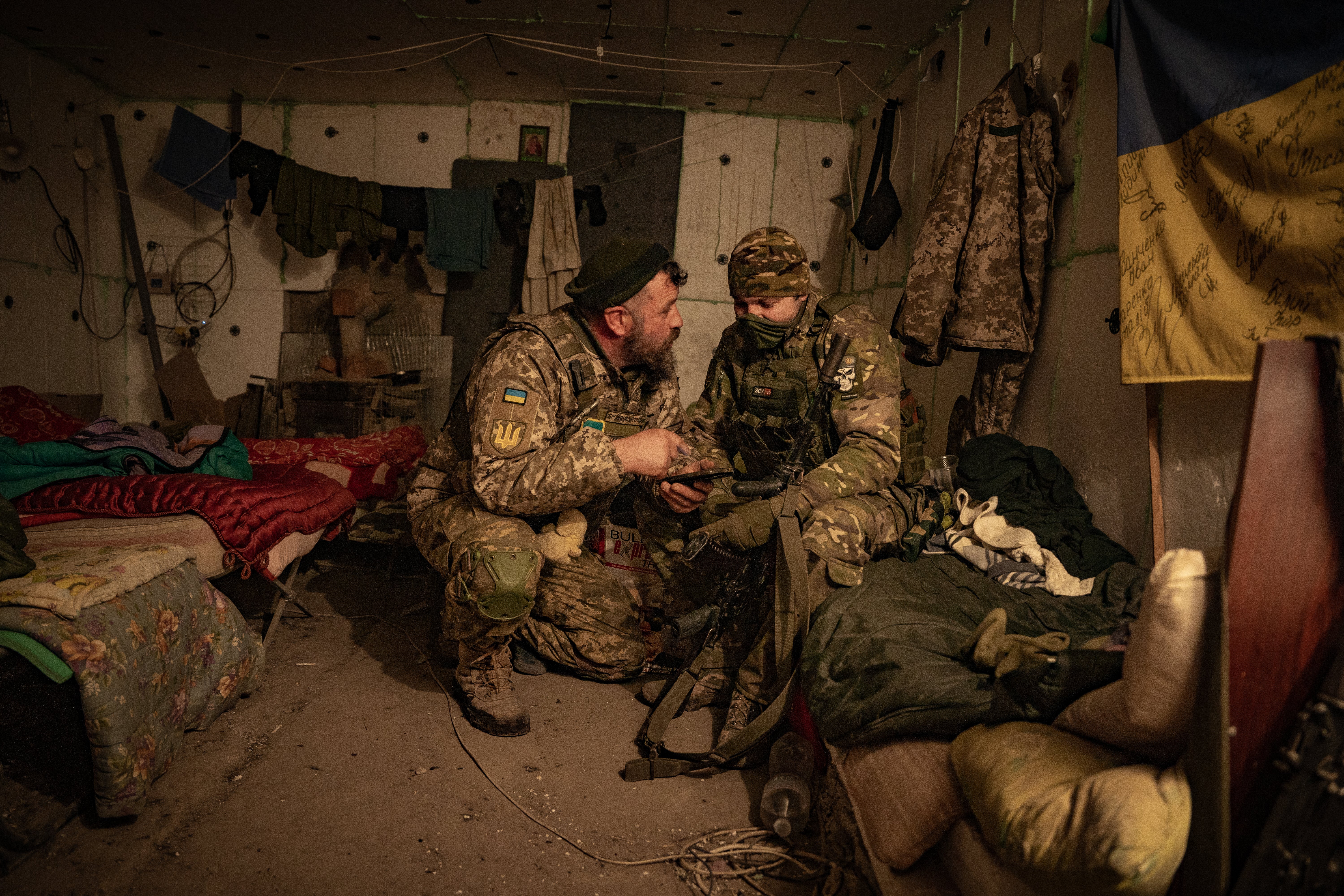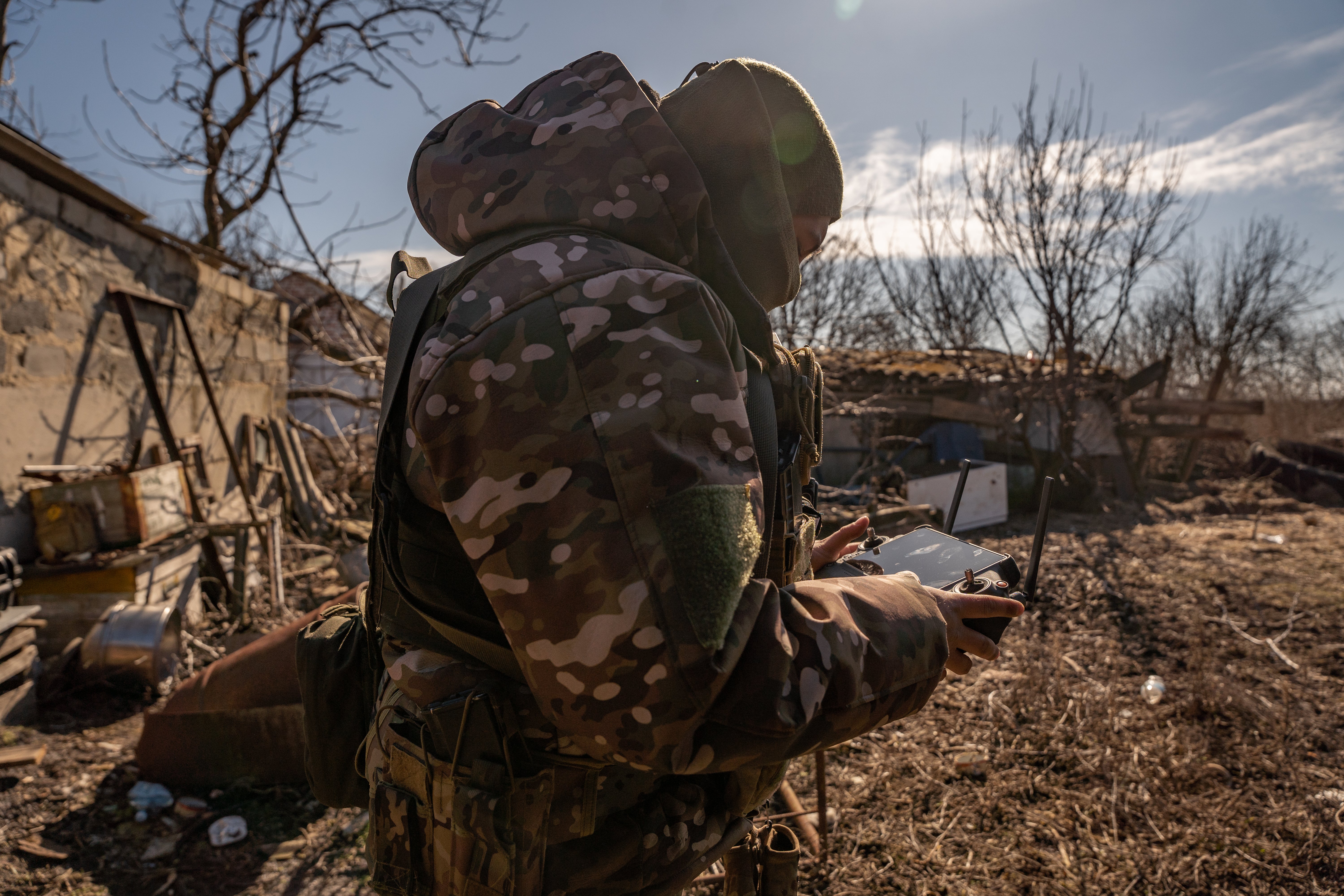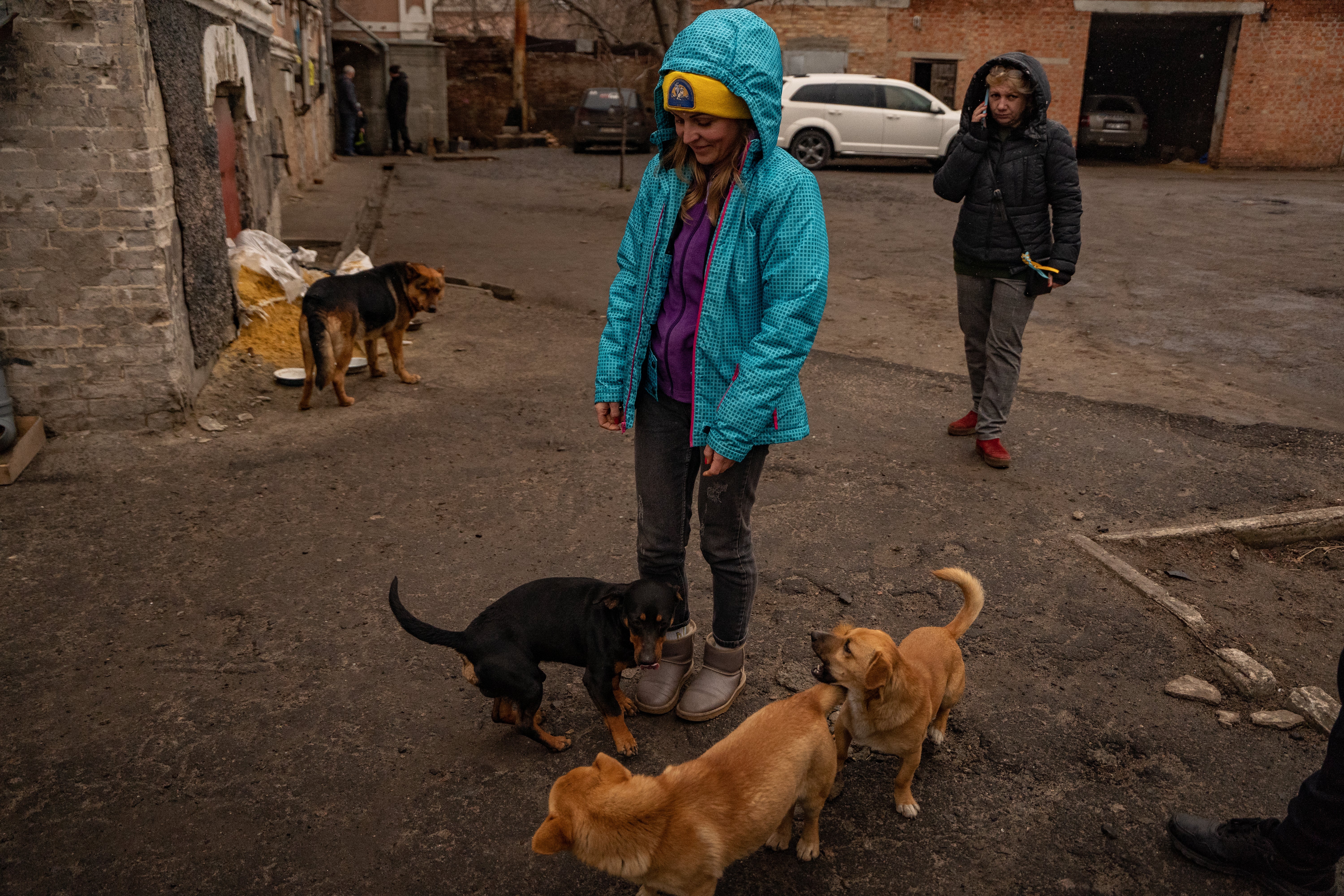Inside Ukraine’s ‘D-Day’ counteroffensive
On the frontline of Zaporizhzhia, soldiers are poised. In Kyiv’s corridors of power, plans have been drawn up to end Putin’s occupation. Chief international correspondent Bel Trew talks to the key players as Ukraine prepares to strike back against Russia – and break the war’s brutal deadlock


Your support helps us to tell the story
From reproductive rights to climate change to Big Tech, The Independent is on the ground when the story is developing. Whether it's investigating the financials of Elon Musk's pro-Trump PAC or producing our latest documentary, 'The A Word', which shines a light on the American women fighting for reproductive rights, we know how important it is to parse out the facts from the messaging.
At such a critical moment in US history, we need reporters on the ground. Your donation allows us to keep sending journalists to speak to both sides of the story.
The Independent is trusted by Americans across the entire political spectrum. And unlike many other quality news outlets, we choose not to lock Americans out of our reporting and analysis with paywalls. We believe quality journalism should be available to everyone, paid for by those who can afford it.
Your support makes all the difference.Against the deadly beat of artillery fire, the drone commander picks his way through the destroyed remains of the village which lies just a few hundred metres away from Russian positions.
Around him civilian life is now absent, the remnants frozen in a tableau of hasty and desperate evacuations.
We are in the region of Zaporizhzhia, and he is taking us to meet his unit hiding somewhere near the southeastern frontline of the Ukraine war. The unit need to keep out of sight of Russian drones, which are also flying overhead.
“No one can live here anymore because it’s too close to the frontline,” Val, 39 the commander of “Vyhor” drone squad says, peering at a clear blue sky.
“Only the military are here doing their tasks,” he adds, radioing his team who emerge silently from their camouflage into an empty cattle shed.
“We have to move from our spot every two days because we are high-profile targets,” says a 31-year-old drone operator known by his codename Odesa, who is readying his equipment for another round of surveillance.
“The artillery can’t work randomly, they need to see where they are shooting, if they [have] got the shot. So we are the eyes.
“If they take us out, they take out the army’s eyes.”
The Zaporizhzhia region is the often-overlooked southeast corner of Ukraine’s now 900-mile (1,500km) frontline. The speedy capture of parts of this region just a week into President Putin’s invasion of the country last February helped Moscow forge a strategic land bridge to occupied Crimea, which Russia illegally annexed in 2014.
It also gave the Kremlin control of Europe’s largest nuclear power plant, sparking global panic over the risk of a possible meltdown. Missile strikes have caused dangerous outages and left the plant running on emergency diesel generators on more than one occasion.
These fears will only increase with the suggestion on Wednesday by Ukraine’s state-owned Energoatom company that Russian forces are planning to evacuate more than 3,000 workers from the town that serves the plant. Last week it was reported that Russia evacuated some 1,500 people —including 600 children — from 18 towns and settlements around the atomic energy facility.
Rafael Grossi, who heads the International Atomic Energy Agency, said this week the situation is becoming “increasingly unpredictable and potentially dangerous.”
This has placed Zaporizhzhia right in the heart of the conflict and has made it a popular contender for Ukraine’s much-anticipated spring counteroffensive to take back Russian-controlled territory.

Ukraine hopes its counterattack – which has been labelled its possible “D-Day” by some commentators – will break what has become a gruelling frontline deadlock with Russian forces in many areas, with Moscow's forces having consistently outnumbered and outgunned the Ukrainian military.
The invasion launched on 24 February 2022 has evolved into a grinding war of artillery attrition, punctuated by some spectacular gains by Ukraine before the winter. The Ukrainians have vowed to do that again, knowing that the unconditional military and financial support of the country from Western allies has a shelf life.
For now, the West has stepped up.
On Tuesday the US said it will provide $1.2bn (£950m) more in long-term military aid to further bolster Ukraine’s air defences as Russia continues to pound the country with drones, rockets and surface-to-air missiles.

On the same day, European Union legislators decided to fast-track legislation to boost ammunition and missile production for the Ukraine war effort, following the announcement in March of plan to send a million rounds of artillery shells.
Getting “badly needed ammunition” to Ukraine quickly is essential, Ukrainian president Volodymyr Zelensky said on Tuesday during a meeting with European Commission president Ursula von der Leyen in Kyiv.
Zelensky also reiterated the need for help to launch the spring offensive, and on Wednesday said in an interview with European public service broadcasters that Ukraine would have to wait for more Western weaponry before making its move, or risk “los[ing] a lot of people”. “I think that’s unacceptable. So we need to wait. We still need a bit more time,” he said.
As well as the specific timing, other details of Ukraine’s long-anticipated counterattack have been kept tightly under wraps.
“De-occupation of all territories is the key strategic idea,” says Mykhailo Podolyak, a senior adviser to Zelensky, vaguely.
Everything related to specific tactical plans, scenario ideas, priority or secondary directions of the counteroffensive “does not make sense to discuss” he tells The Independent.
“This is a matter of security, operational play, and potential loss minimisation. Real plans also depend on the operational situation, which is constantly and significantly changing,“ he adds.
Yuriy Sak, an adviser to Ukraine’s minister of defence, also would not go into details but promises the country is “almost ready” to launch.

“As you can see missile terror continues, civilian deaths continue – destruction continues,” he says. “We need to hurry to finish this as soon as possible.”
Initial speculation on the counteroffensive focused on the war-ravaged Donbas region in the east, which contains both the regions of Donetsk and Luhansk that Russia wants to control. The focus of the Russian army and its mercenary groups like Wagner has been on the battle raging around the city of Bakhmut in Donetsk, once famous for sparkling wine but now utterly decimated.
There was also conjecture the Ukrainians would aim to push back Russian lines in the northern border region of Kharkiv – following similar gains there in the late summer. But eyes have also turned to the southeast.
Soldiers in the Zaprozhizhia region, though silent about counteroffensive speculation, have told The Independent the Russians have been quietly fortifying their positions here. Over the last few months they have been digging trenches, bringing armoured vehicles and bolstering troops perhaps in anticipation for what is coming, perhaps to try to open a new route to Kyiv.
“They are trying to advance here, and are shelling all the time. You see the city is completely destroyed,” said an infantry commander known by his codename Shepherd, as he sat in a bunker in the frontline town of Orikhiv.
“If they take this area they could cut off Ukrainian forces in Donbas, and allow them to effectively come around the back. They can open a new road to Kyiv,” he adds.
“But we haven’t let them take one metre.”
We haven’t let then take one metre
Ukraine could, however, act first. If, in its counteroffensive, Kyiv's forces advances south from Zaporizhzhia towards Melitopol, an occupied city along the country’s Black Sea coastline, it would break Russia’s land bridge to Crimea.
That would cut off Russian supply lines to areas in Zaporizhzhia including the nuclear plant and also to its positions further west in Kherson.
The Kherson region, which straddles the Dnipro River, was the scene of one of Russia’s lightning victories early on: an advance that was so quick it sparked accusations from Ukrainian officials that there was regional administrative support for the invading army.
Facing mounting pressure from the Ukrainian military, in November Russian forces eventually withdrew to the eastern bank of the Dnipro and has been heavily shelling the now Ukrainian-controlled regional capital from the other side of the river bank. Dozens of civilians were killed in the barrages last week.
An advance by Ukraine to Melitopol would cut their positions off in Kherson, with deadly consequences.
For now, the Ukrainians are holding the line in areas of Zaporizhzhia under increasingly heavy fire.
In abandoned frontline villages, the handful of civilians who have stayed put stare blankly at the moonscape of craters that were once their backyards.
In the towns, residents scatter as a soldier shouts “incoming air raid” and a Russian fighter jet roars overhead.

“There are about 1,500 of us still left here with no electricity, gas or water,” says Luda, 39, while taking cover under her home in Orikhiv. She stayed put to look after hundreds of now-abandoned pet cats and dogs.
“I go to bed [each night] thinking ‘I hope I wake up’,” she adds.
Further east at artillery positions along the regional border between Zaporizhzhia and Donetsk – another hotspot – the brigades are busy pounding Russian positions, which are also apparently fortifying.
There the commanders have one simple request: more Western support.
“Ammo ammo ammo,” says brigade commander Khmara, 24, as we take cover after a volley of howitzer fire towards Russian tanks.
“Definitely ammo is what we need, then we will finally end this war.”





Join our commenting forum
Join thought-provoking conversations, follow other Independent readers and see their replies
Comments